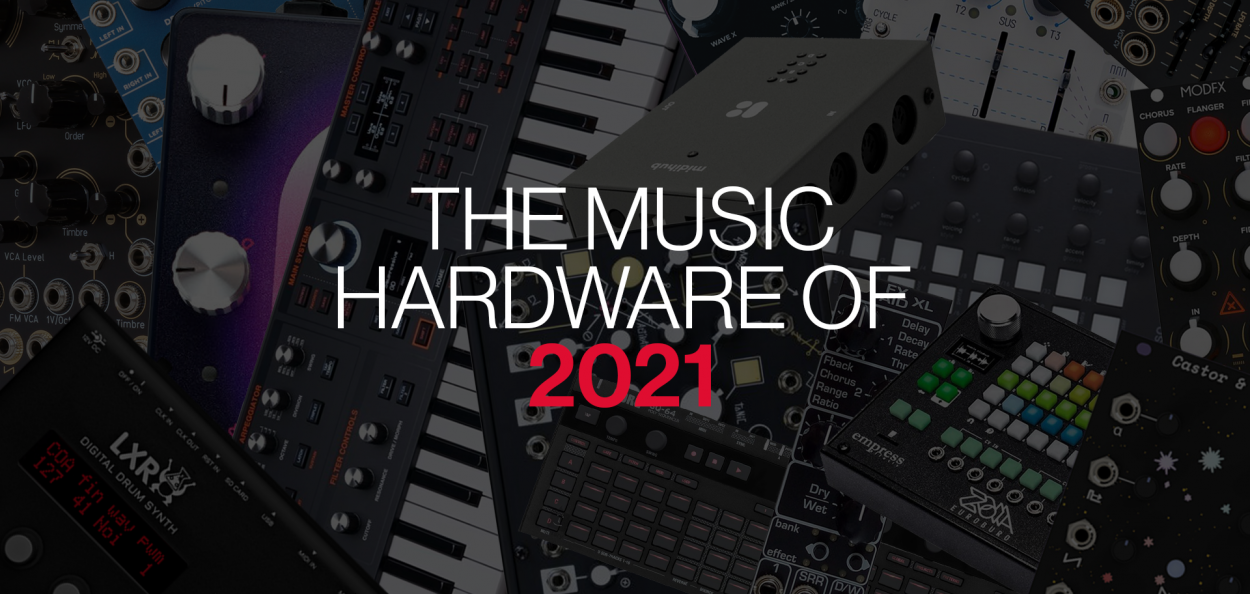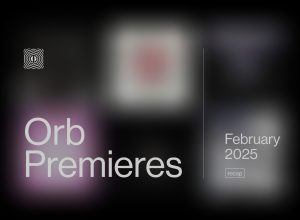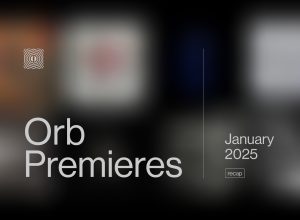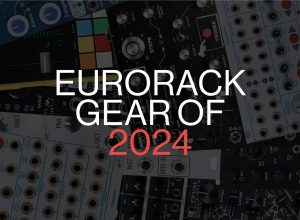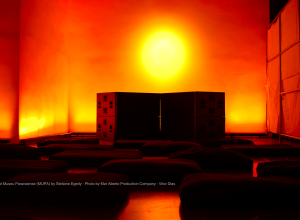Despite the multitude of supply chain challenges that ran throughout 2021, electronic instruments developed around the world continued to evolve and make their way into music studios. As we transition into the new year, we thought it would be a good time to take a look back at some of the most interesting electronic music instruments and production hardware of last year, from manufacturers big and small.
TEIA VastWave
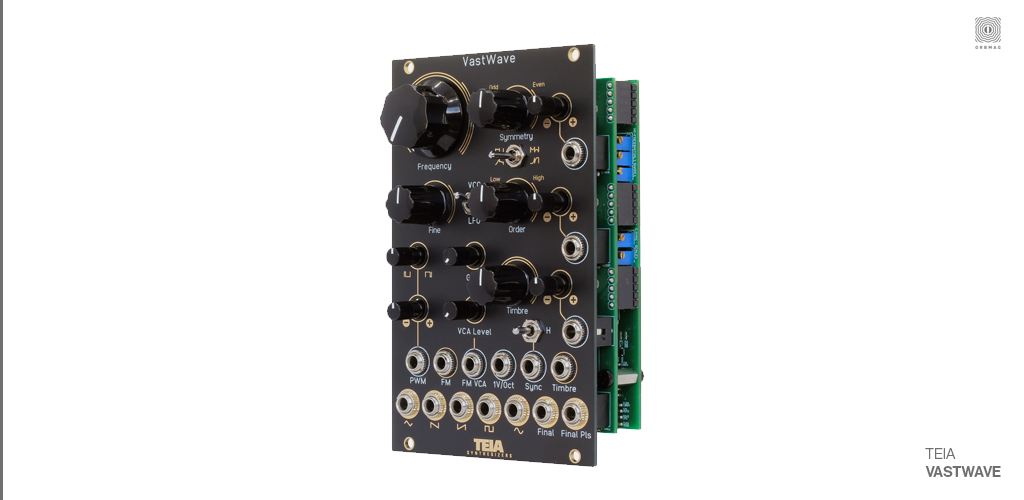
Based in Portugal, small modular shop Teia Synthesizers’ latest creation is VastWave, an analog single core complex oscillator—essentially an oscillator with a built-in wavefolding circuit. This makes it equally adept at evolving drones as it is rhythmic, dynamic stabs, but there’s much more going on beyond this as well. There’s a built-in VCA for its frequency modulation, an input in the wavefolder for another oscillator, a built-in glide circuit, and an LFO mode that turns it into one of the most elaborate LFOs out there. The design is very much inspired by Don Buchla’s 259 complex oscillator and Donald Tilllman’s article, “A Palette of Static Audio Waveforms.” But it’s far from a 259 clone—the circuit is completely original. “At the time I was working on a design for a Teia VCO, and after reading Donald Tillman’s article I got very interested in odd and even harmonics waveforms,” says the designer Ruben Costa. After figuring out how to construct some of these waves, Costa said it only made sense to add a 259-style folder/waveshaper, as well as a second pair of odd/even waveforms to make things even more interesting.
Taktaktak Drumbo
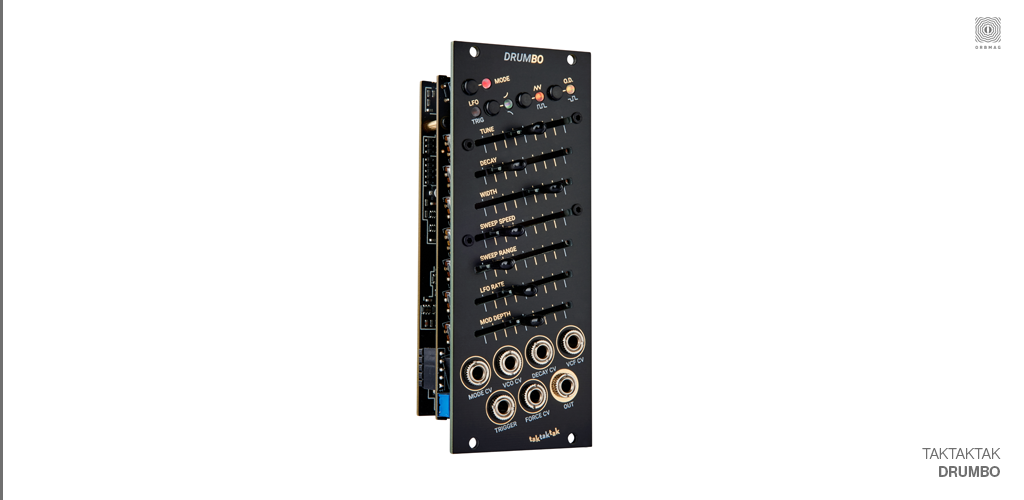
From Danish brand TakTakTak comes Drumbo, a drum synthesizer heavily inspired by the Syncussion SY-1, itself originally released in 1979 by the acoustic drum manufacturer Pearl. The machine, which initially became associated with the ‘80s disco, was later rediscovered in the 90s with a dose of acid; since, the SY-1 has become near-unobtanium, thanks in part to Aphex Twin using four (!) of them on his album, Syro (according to the liner notes).
Drumbo squeezes an incredible amount of Syncussion power into a slim 10hp, letting you create an endless barrage of ever-morphing alien chirps, squelches and crushes, bringing an undeniable energy to virtually any Eurorack setup. CV inputs let many of the Drumbo’s parameters be modulated (in addition to its onboard LFO), including the ability to dynamically change modes. This means that making clever use of CV sequencing will produce wild and dynamic sequences, built from an extremely wide range of percussive sounds—all out of this tiny device’s single audio output. One of the most powerful drum synthesizers ever squeezed into just a handful of hp. ADHD-approved.
Modbap Osiris
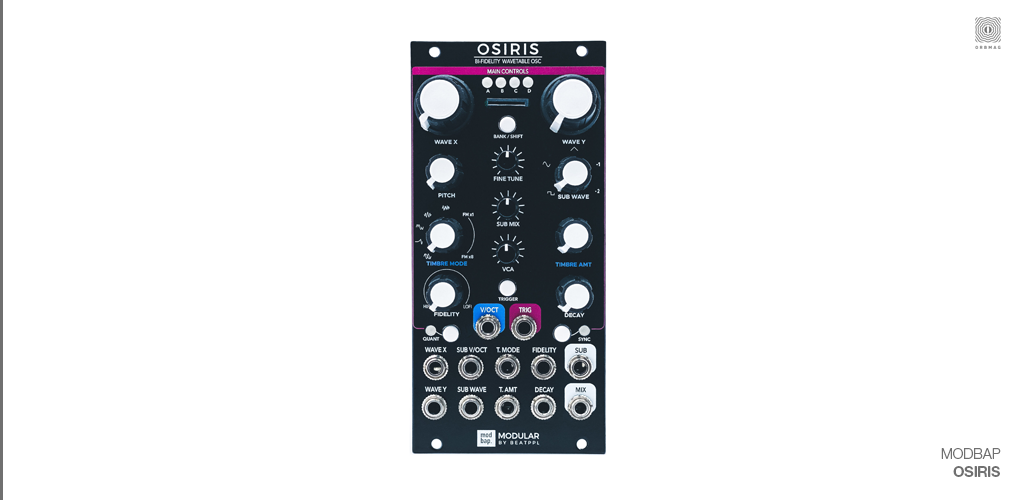
Modbap Modular’s Osiris may not be the first Eurorack wavetable oscillator, but it’s easily one of the best. Developed in collaboration with Ess Mattisson of Fors, who developed the synth engine to Modbap’s spec, Osiris features four banks of 32 wavetables, a dedicated app for users to make their own, as well as an onboard microSD card slot for loading them onto the module.
Osiris sweeps through its wavetables along both its X and Y axis, allowing for an extremely morphable sound, which can be further shaped with unison, bend, fold, sync, noise, and variable FM modes—which can be dialed in via CV. Modbap, maker of the beloved PER4MER module, calls the Osiris a “bi-fidelity wavetable oscillator,” which refers to the dedicated (and CV-able) fidelity parameter, which allows you to continuously blend between a clean, 96kHz hi-fi wavetable and a crunchy, lo-fi version.
In addition to its main oscillator, the Osiris includes a sub-oscillator with multiple waveshapes, and the ability to independently control its pitch via a 1V/oct input—making it possible to patch Osiris as a paraphonic or duophonic sound source. Combined with its internal, controllable VCA and dedicated decay control, this means the module can function as a self-contained duo/paraphonic voice. An incredibly powerful, fantastic-sounding module that sets a new high bar for Eurorack wavetable synthesis.
Happy Nerding FX AID XL
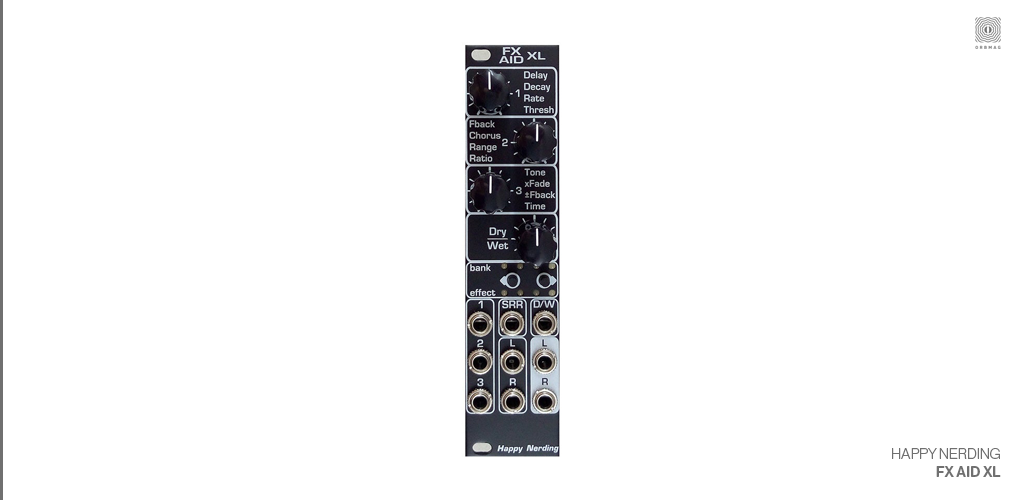
The unassumingly-named FX AID XL from the equally unassumingly-named Happy Nerding is a Eurorack stereo effects powerhouse. Like the original, it runs 32 user-customizable audio effects, an analog dry/wet with CV control, as well as a CV-controllable Sample Rate Reducer, which works by changing the speed of the internal clock. The XL brings with it the addition of three CV effect controls—one for each effect parameter, all squeezed into 6hp, making it an incredibly powerful effects module in even the smallest of rigs.
All of this would be less exciting if the effects algorithms didn’t sound incredible…but they do. If there’s an effect you’re after, it most likely exists in the library at fxaid.app. Massive reverbs, tape delays, pitch shifters, filters, distortions, panners, and phasers are all here—including emulations of heavy hitters like Big Sky, Magneto, Blackhole, Clouds, Ursa Major, and Lo-Fi Junky, to name a few. As if that wasn’t enough, they’ve recently added drum machine emulations, so if you’re missing an 808 kick or a 909 snare, load it up on the XL and you’re in business. It’s one of those modules that will find its way into every patch you make.
The Pill Stereo
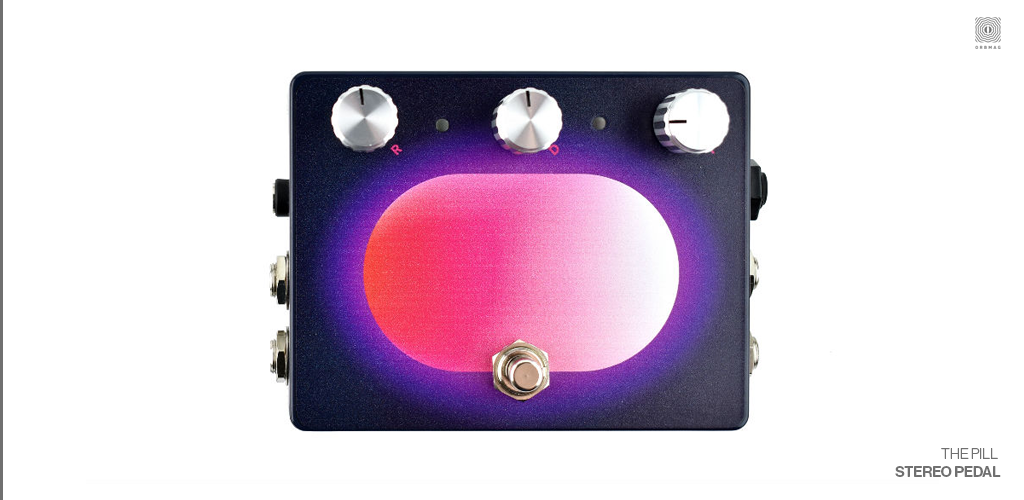
The Pill Stereo is designed to do one thing very, very well: it’s an analog stereo ducking pedal. Not unlike side-chain compression, ducking involves a source’s volume being automatically ‘ducked’ via a trigger input or secondary audio source. Primarily, The Pill is designed to let your drums cut through your mix with a pumping effect, and with as little fuss as possible. It’s about as no-frills as a studio tool can be—no manual required, no faffing about—and does this job effortlessly.
There are just three adjustable parameters: ’trigger’ being the threshold/input gain, ‘depth’ controlling how deep the pumping effect goes, and ‘release’ determining how long this pumping lasts, It’s arguably the first of its kind in the pedal format, making it easy to slip onto pedalboards or into desktop/modular setups of all shapes and sizes. It can subtly glue together a low-end mix, or more aggressively make its presence felt, creating wide berths of organically materializing space. And beyond its core use case, the simple controls belie a fertile zone for experimentation: By choosing different sound sources and contexts, the effects can range from rhythmic tremolo on a synth or guitar, all the way to generating delicate, airy sound design by running pink or white noise through it, and then out into an effects chain. (Its analog nature makes it sensitive enough to pick out the noise signal’s many tiny individual peaks.)
Both in terms of its functionality and its build quality, this is not your typical compressor, with optical compression and a Burr-Brown audio buffer for top-tier sound quality. The PCB is made and SMD parts are populated in Berlin, while the through-hole parts and jacks are all hand-soldered in Switzerland. The chassis is built like a tank, and so is the audio path: When there’s no signal at the trigger input of The Pill, the output is 100% unaffected, and this sort of response subtly underscores its power as a creative tool. The Pill Stereo is a powerful, versatile “do one job and do it well” device, while doubling as a fun and intuitive tool for hands-on sound design.
Make Noise Strega
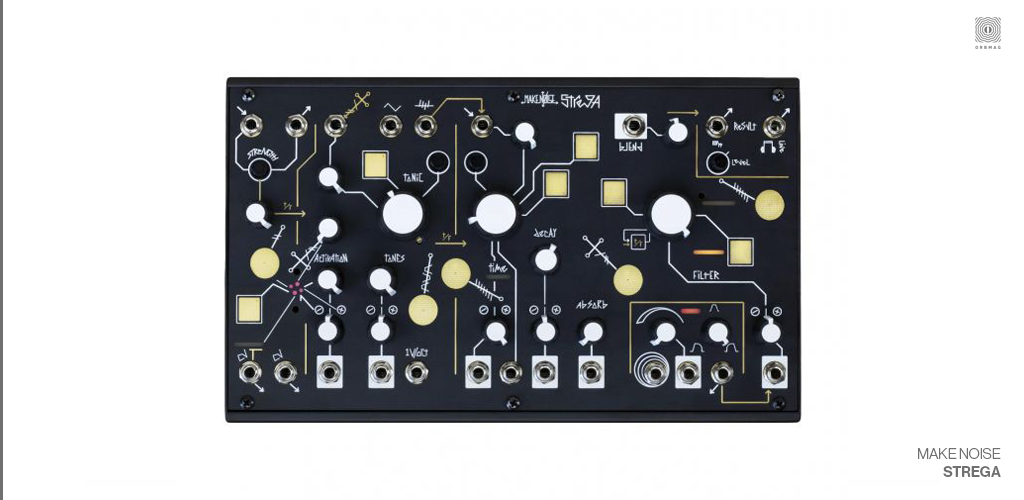
Perhaps the best description of Strega is one that comes directly from Make Noise itself: an echo synthesizer. It’s essentially a single complex oscillator (with PWM and wavefolding), fed into a noisy, lo-fi delay circuit used in karaoke machines, and then run through a filter at the tail end. This signal path is buoyed by a looping envelope and a gang of “interference” functions, all of which enhance its particular flavor of sonic alchemy. It’s packaged up into a device that shares the same form factor as the Make Noise 0-Coast, making it a wonderfully compact and powerful semi-modular device that can fit inside a larger modular setup—or, thanks to its versatile audio input, just about anything else that makes sound.
In addition to its 20 Eurorack patch points, the unit is dotted with contact plates, which give you a tactile way to manipulate the sound: circular dots are sources, and squares are the destinations. Connect them using your fingers (or any other conductive material), and you’ll introduce different types of interference, randomness, and/or subharmonics to help sculpt and alter the sound. Since things like your body temperature and the moisture level of your skin affect the quality of the connection, there’s a certain individualized magic that this interaction imparts.
It’s worth noting that Strega is Italian for ‘witch’, and was developed in collaboration with the musician Alessandro Cortini. If either or both of those facts sound compelling, there’s almost certainly some alchemical magic here for you to get lost in. It’s an experimental sound playground, and one users will be discovering new possibilities around for years to come.
Erica Synths LXR-02
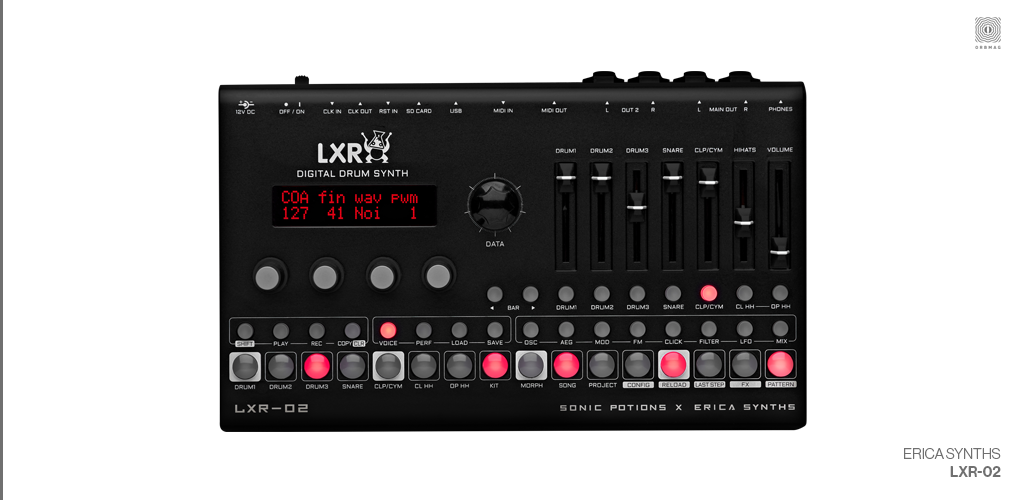
The LXR-02 is the result of a collaboration between Erica Synths and the creator of the original LXR, Sonic Potions, aka Julian Schmidt. It’s a proudly digital and decidedly spartan drum machine, from its minimal red alphameric display and metal chassis to its clicky buttons and dedicated track volume sliders. From an interface perspective, it feels no-frills and to-the-point, and playing it almost feels like operating a command-line computer terminal—in the best way possible. It’s here to make fast, loud, digital music, not friends.
With six tracks of highly sculptable synthesized drums (no samples here), there’s modulation aplenty: Each voice has LFOs for amplitude, filter, and oscillator settings, and more. Each also has sample rate and distortion controls for lots of grit—while it can certainly do clean and pristine, the machine’s happy place is rolling around in the dirt.
Arguably the LXR-02’s most memorable feature is its ability to morph between two kits. Essentially, you select a “destination kit” and then use this control to morph between the currently playing kit and this alternate kit. The results are pure joy for sonic explorers: it feels like hiking along the mountains of waveforms, using your ears to find the many cracks, crevices, and sweet spots that make up the terrain between the two zones. A global sample rate control and a playable performance mode make for even more immediate, hands-on fun.
While the morphing feature alone makes it worth the price of admission, there’s plenty more here. In terms of I/O, there are four 1/4” outputs (which can be used as either two stereo pairs or four individual track outputs), MIDI in and out, USB MIDI, as well clock in, out and reset, along with an SD card slot for saving and loading presets. But at the end of the day it’s a black metal box that makes thrashing, shrieking drums—and isn’t that all you really need to know?
ASM Hydrasynth Explorer
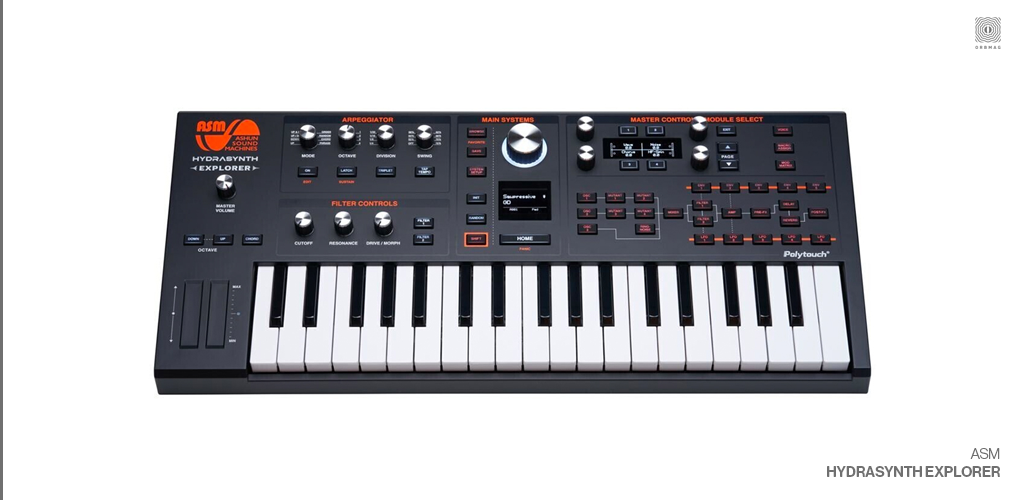
Attempting to summarize the ASM Hydrasynth Explorer in a couple of paragraphs is something of a fool’s errand. As with its older siblings the Hydrasynth Desktop, Keyboard, and Deluxe, it’s about as fully-featured as synthesizers get. It’s a fantastic-sounding, fully digital synthesizer that feels almost endless in its versatility. Fortunately, all this depth is built into an interface that’s incredibly quick to learn, thanks to two independent displays and a grip of hands-on controls.
The Explorer is the most accessible in the Hydrasynth line, and retains the eight-note polyphony, with three oscillators per voice and over 200 waveforms to choose from. Those oscillators are modulated using Mutators, which range from classic sync and FM to more exotic flavors. Patches can be animated by a shedload of envelopes and LFOs, in all the shapes and sizes you could desire. All of these mods can be routed virtually anywhere in the synth using a handy mod matrix, and a cool “SemiLock” option even lets you lock the LFOs to semitones, making them function like a simple sequencer. There’s a full suite of effects that can be stacked four at a time, along with MIDI/USB I/O, as well as Pitch/Gate/Clock outputs, and two Mod outputs that can send modulation voltage from any source that can be routed in the mod matrix (which, once again, is a lot). If you’re looking for a powerful, versatile polysynth synthesizer that won’t break the bank, the Explorer is well worth a look.
Strymon StarLab
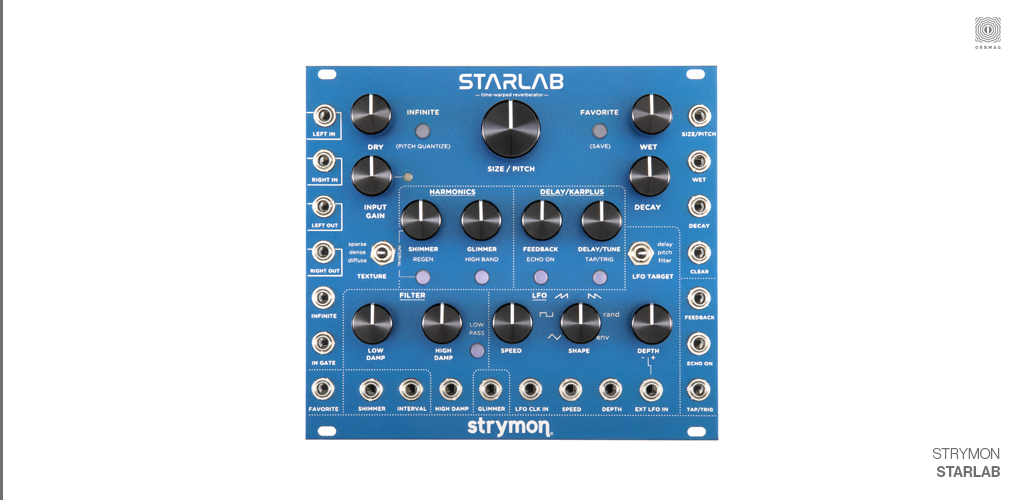
Strymon describes the StarLab as a “time-warped reverberator,” and this feels pretty appropriate. The company says development began with the goal of creating “the highest quality reverb possible for modular systems,” with plenty of hands-on and CV control. Somewhere along the way—namely, when they decided to let the pre-delay signal be fed directly to the module’s output—this came to include the development of delay, chorus, and flanger effects, all of which can be used together with or independent of the reverb. The result is a stereo effects module that goes far beyond traditional rooms and halls.
There’s an onboard LFO, as well as a Karplus-Strong mode, that turns the module into something of a delay-based, CV-controllable monophonic string synthesis voice. A filter lets you sculpt the reverb, as well as the Karplus-Strong voice, while an “Infinite” button (that can be turned on and off with trigs or gates) freezes the reverb, while still letting new audio go through it. At 28hp it’s definitely a hefty module, but with the ability to save and recall four presets from the front panel, it can do double duty in the context of a number of different module combinations.
Essentially, StarLab is a deep and powerful Strymon reverb pedal, reconfigured from the ground up for Eurorack. And, true to the format, it can morph and mangle itself into a wide range of functions and combinations, making it a stereo effects and audio processing hub to be reckoned with.
Blokas Midihub
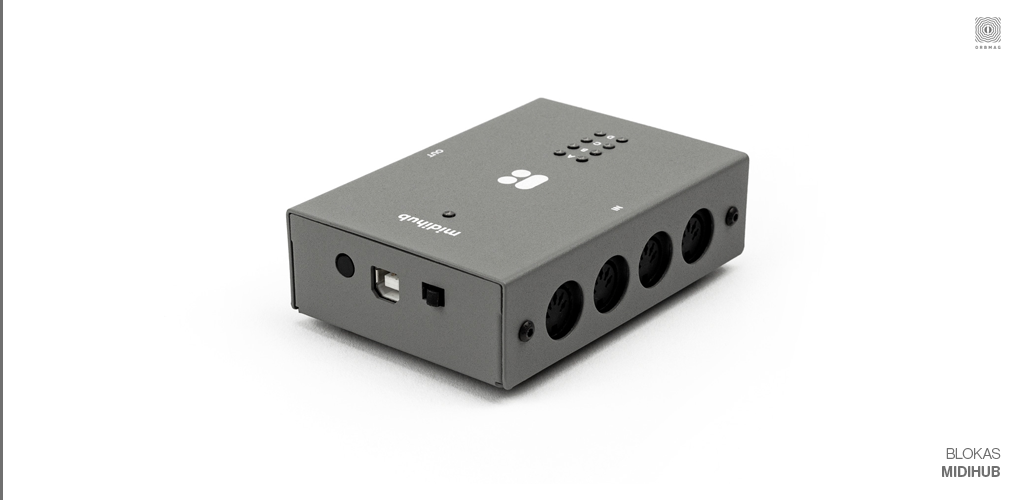
Few formats in any technological realm have stood the test of time like MIDI, and creative people continue to innovate and extend the format. Midihub is a perfect example: it’s a highly configurable MIDI processor and router, capable of connecting music and visual devices that support MIDI in a wide range of ways. Using the accompanying MIDIhub editor application, you’re able to apply complex processing to your MIDI data, ranging from simple CC filters to arpeggiators and LFOs. It can split, merge, transform, route, randomize, transpose, and micro tune incoming data, and works standalone once a particular setup has been uploaded to its internal memory.
Winterbloom Castor & Pollux
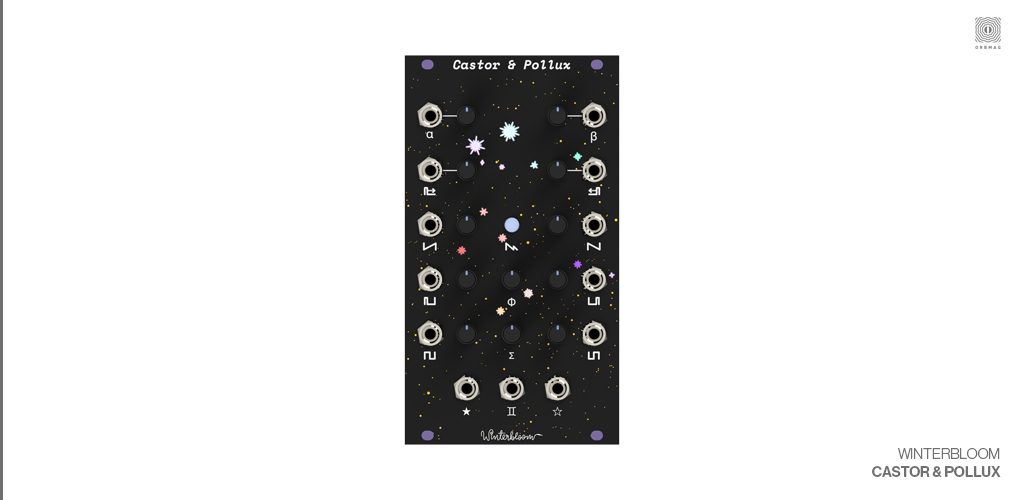
Castor & Pollux is a dual oscillator, heavily inspired by the classic Roland Juno. Its two digitally-controlled analog oscillators are capable of accurately reproducing the quintessential ‘80s synth sounds, and come complete with independent and mixed ramp, pulse, and sub outputs. The second oscillator can be detuned to achieve harmonically complex, hard synced waveforms, or function as its own fully independent second voice. Finally, an internal LFO can apply subtle pitch shifting to the second oscillator, capturing the Juno’s legendary chorus.
Empress Zoia Euroburo
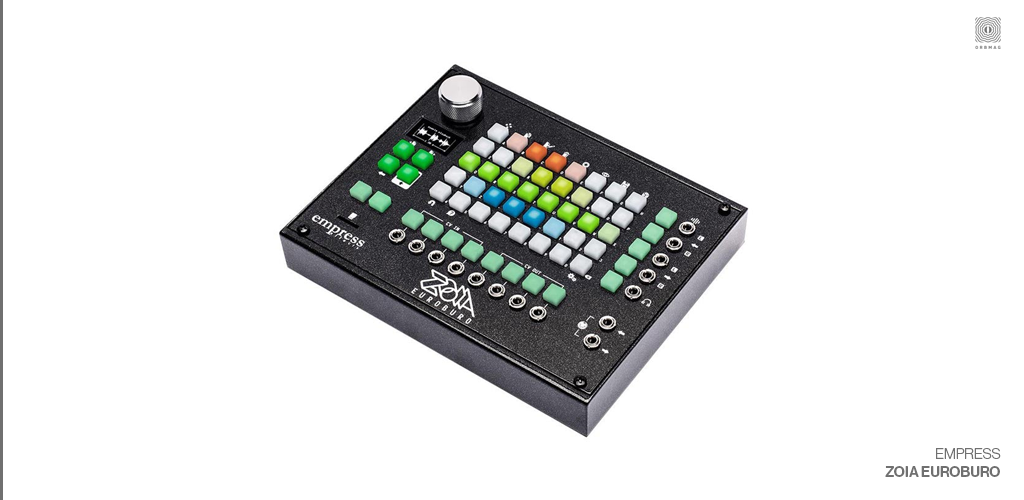
A modular that lives inside your modular, the Euroburo is the Eurorack-compatible sister device to the original Zoia pedal. It’s essentially an entire hardware + software platform and interface for creating Eurorack effects, sequencers, utilities and even synthesizers. It’s got four freely assignable CV inputs, along with four outputs for interfacing with other modules or semi-modular devices, along with MIDI and stereo audio ins and outs. There are plenty of preset signal chains, but also discrete building blocks that allow you to build virtually anything you might need—envelopes, audio effects, oscillators, etc. The Euroburo arguably works best as a sort of catch-all for the functionality your modular setup needs, packed into 34hp. While there’s a learning curve, creating patches with the ZOIA is tactile, and uses the push-button grid to patch ins to outs, and a large encoder to fine tune. It feels like a device designed for those who want to master its particular workflow, but if you’re not particularly up for building things from scratch, there’s an active community of folks building and sharing functionality at patchstorage.com. An optional case and PSU even lets it work standalone.
Korg SQ-64
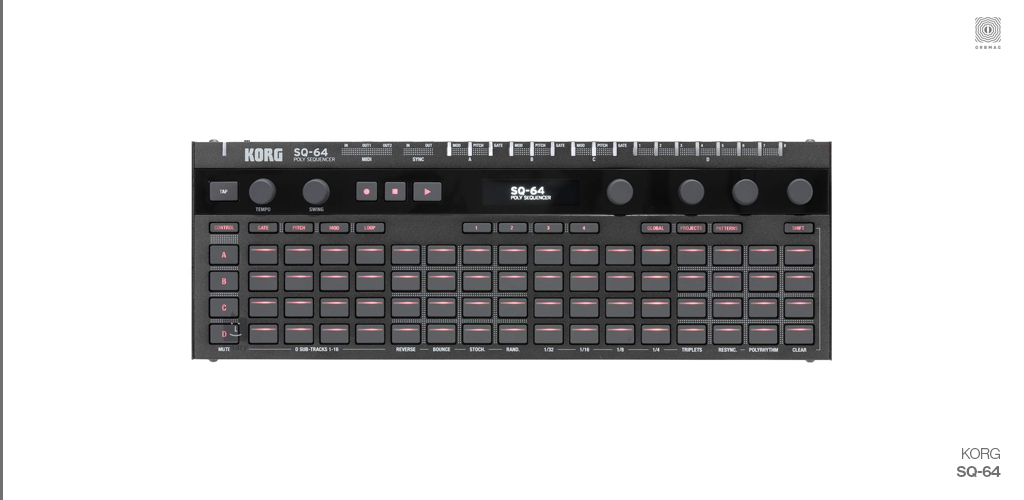
After more or less falling off the radar, hardware sequencers have been having a moment. This is largely due to many musicians removing the computer from their workflow, what with all the relatively recent developments in modular and desktop instruments. Korg’s entry—a follow-up to their powerful and affordable SQ-1—is the SQ-64. Four tracks of 16 buttons apiece are where the magic happens, which can be zoomed in to provide 64 steps for a given track. There’s also a small OLED screen, along with connections for MIDI (one in, two out), clock sync in and out, as well as modulation, pitch, and gate analog outputs for each of the three melody tracks, and eight trigger outs for the drum lane.
Tiptop ModFX
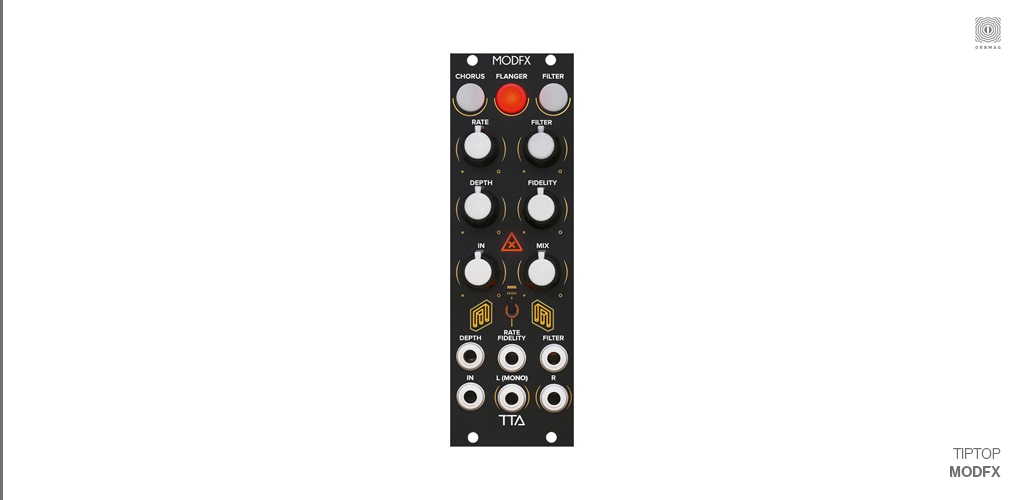
The ModFX is a multi-fx module with a unique chorus, flanger, and filter effects packed into 8hp. Each of the banks has eight programs designed to complexify the incoming signal, from wandering, detuned choruses to delayed flangers and freaked out phasers. The Fidelity control lets you control the quality of the DSP processing, putting bit-crushing ability right at your fingertips. If it’s a traditional effects module you’re after, this isn’t it—ModFX is built for experimentation.
Torso T-1 Algorithmic MIDI sequencer
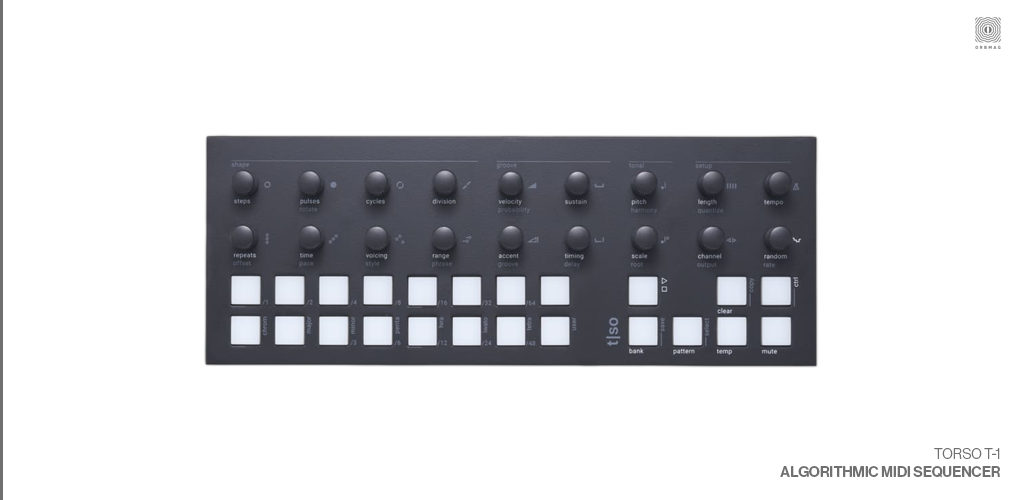
Torso’s T-1 puts complex, algorithmic sequencing—something previously limited to computer-based solutions or elaborate modular setups—inside a portable, powerful self-contained box. It’s built for hands-on control of generative sequencing via its buttons and encoders, changing the process from gridded step-sequencing or live playing notes live to something closer to coaxing melodies and rhythms. Innovative and exciting, there’s nothing else out there quite like it.
Auza Audio Wave Packets Wave Source
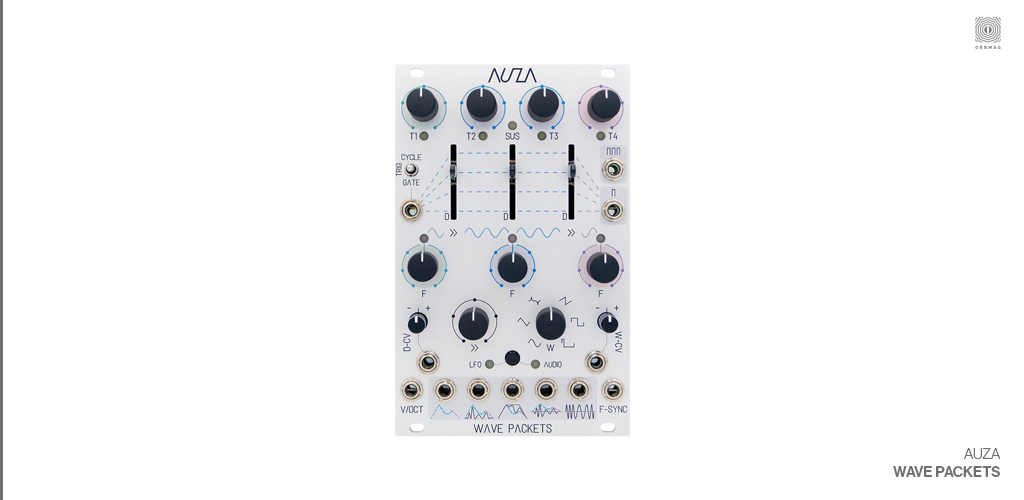
As Auza defines them, “wave packets” can be lots of things—envelopes, LFOs, or even oscillators. These time-oriented packets allow for control of their time, depth, frequency, and waveshape, and they’re what the module sends out from its five outputs. This flexibility lets it function as both a sound source and a modulation device at once, in unique and interesting ways. If you’re looking for an endless variety of complex modulations and audio waves, you’ll find them all right behind this lovely 16hp faceplate.
